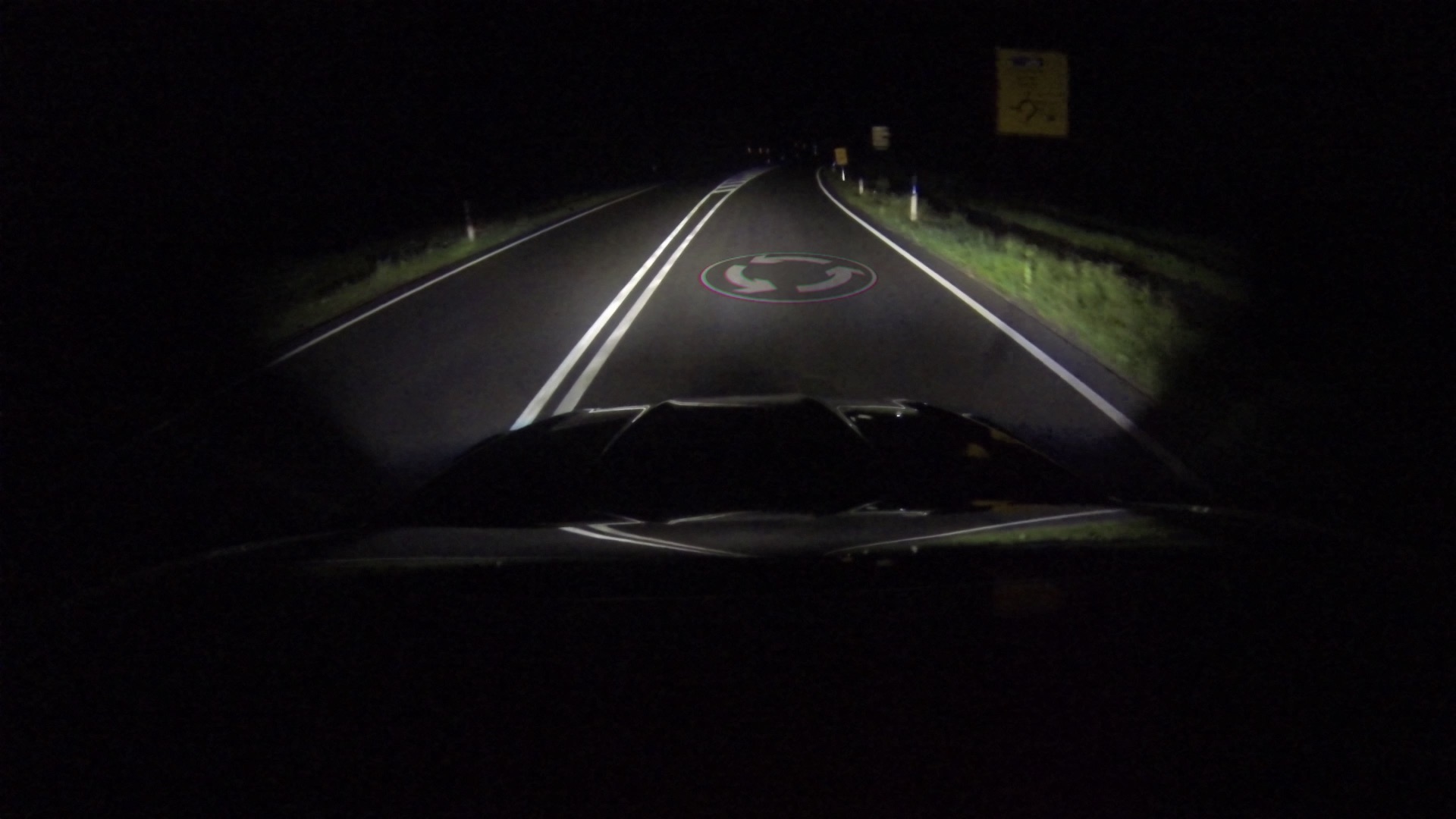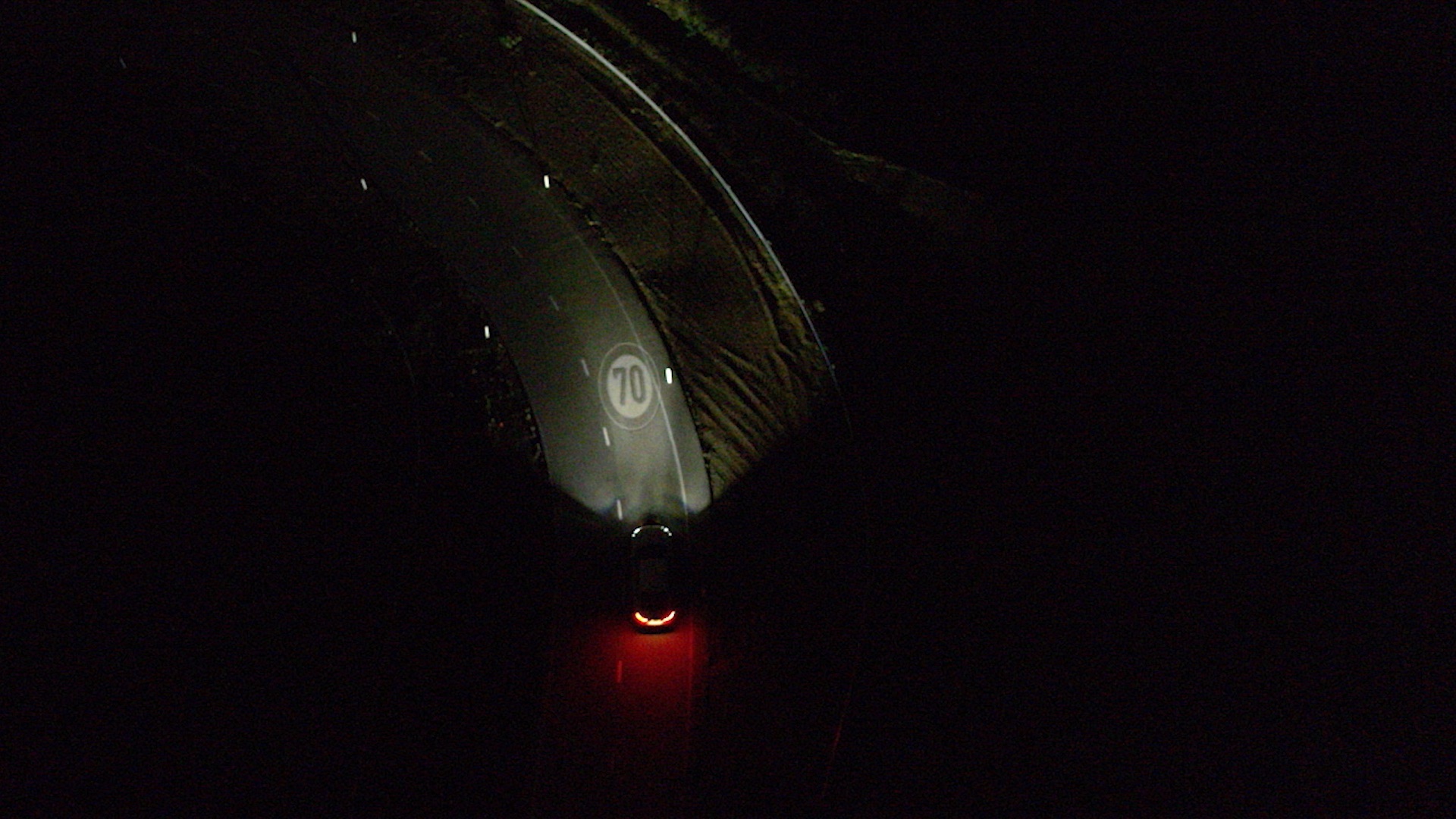Head-up display technology allows drivers to keep looking through the windshield while still monitoring their speed, navigation intersections and other important data. But Ford’s latest version of HUD technology doesn’t project crucial info like road signs onto the stretch of glass in front of the driver, but onto the road stretching ahead of them.
Ford is working on a new generation of LED headlights that can provide directions and show speed limits by projecting them onto the road surface. It also claims the tech could be used to help those outside the car, such as pedestrians, by illuminating crossings, or helping drivers steer around cyclists ensuring the car doesn’t pass too close.
Other useful information that could be beamed onto the road includes weather data, such as a snowflake symbol when roads could be icy, traffic data, and guides to help drivers judge whether a parking space is big enough before attempting to shoehorn their car in.
Related: U.S. Finally Allowing Adaptive Headlights, Eight Years After Toyota’s Petition
“What started as playing around with a projector light and a blank wall could take lighting technologies to a whole new level. The driver could get essential information without ever needing to take their eyes off the road,” said Lars Junker, features and software, Advanced Driver Assistance Systems, Ford of Europe.
This isn’t the first time we’ve seen this kind of technology. Mercedes showcased a similar system called Digital Light in 2016 and you can now order a productionized version of it on various Benz cars including the 2022 C-Class in certain markets. The Mercedes version doesn’t project specific road signs but does project warning symbols if, for example, you are attempting to enter a one-way road in the wrong direction, or are about to rear-end the car in front of you, and can help draw your attention to pedestrians in the road.
But while the Mercedes system is already on sale Ford stresses that its version of the technology is still in the development stage and may not be available in every market across the world due to different regulations.











